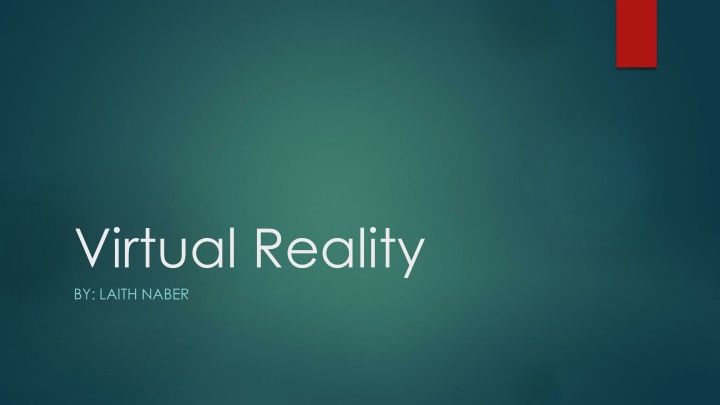
Exploring the World of Virtual Reality: Benefits, Training, and Risks
Discover the uses of virtual reality in training for various professions, educational applications, and entertainment experiences. Learn how virtual reality works and the potential risks associated with its use, including physical discomfort and addictive behaviors.
Download Presentation

Please find below an Image/Link to download the presentation.
The content on the website is provided AS IS for your information and personal use only. It may not be sold, licensed, or shared on other websites without obtaining consent from the author. If you encounter any issues during the download, it is possible that the publisher has removed the file from their server.
You are allowed to download the files provided on this website for personal or commercial use, subject to the condition that they are used lawfully. All files are the property of their respective owners.
The content on the website is provided AS IS for your information and personal use only. It may not be sold, licensed, or shared on other websites without obtaining consent from the author.
E N D
Presentation Transcript
Virtual Reality BY: LAITH NABER
What is virtual reality? Virtual reality is the use of computer technology to create a simulated environment that can be experienced through a head-mounted display or other immersive devices such as an oculus.
How is virtual reality useful? Training: VR can provide a safe and controlled environment for training people in complex or dangerous scenarios. For example, it can be used to train pilots, surgeons, and soldiers in a simulated environment that closely resembles real-world situations. Education: VR can be used to create immersive learning experiences, allowing students to interact with virtual environments and objects. This can be particularly useful in subjects like science, where it's difficult or dangerous to conduct experiments in real life. Entertainment: VR can provide a completely immersive and interactive experience for gamers and other entertainment enthusiasts. It can also be used to create virtual tourism experiences, allowing people to visit and explore places they might not be able to in real life.
How does virtual reality work? Virtual reality works by creating a simulated environment that is displayed to the user in such a way that it feels real and immersive. The technology behind VR involves a combination of hardware and software. The software behind VR works by creating a 3D environment that responds to the user's movements and actions in real time. This requires complex algorithms that can track the user's movements and render the environment in a way that feels natural and immersive.
What are the risks of virtual reality? VR can cause physical discomfort for some users, such as motion sickness, headaches, and eye strain. This is due to the fact that VR can simulate movement and depth perception in ways that can be disorienting for some users. Like any form of technology, VR has the potential to be addictive for some users. This can lead to excessive use of VR and a decrease in other activities, which can have negative effects on mental health and social relationships.
Questions: 1. What are the 3 beneficial use of virtual reality? 2. What can virtual reality train you for? 3. Name two risk of virtual reality.
